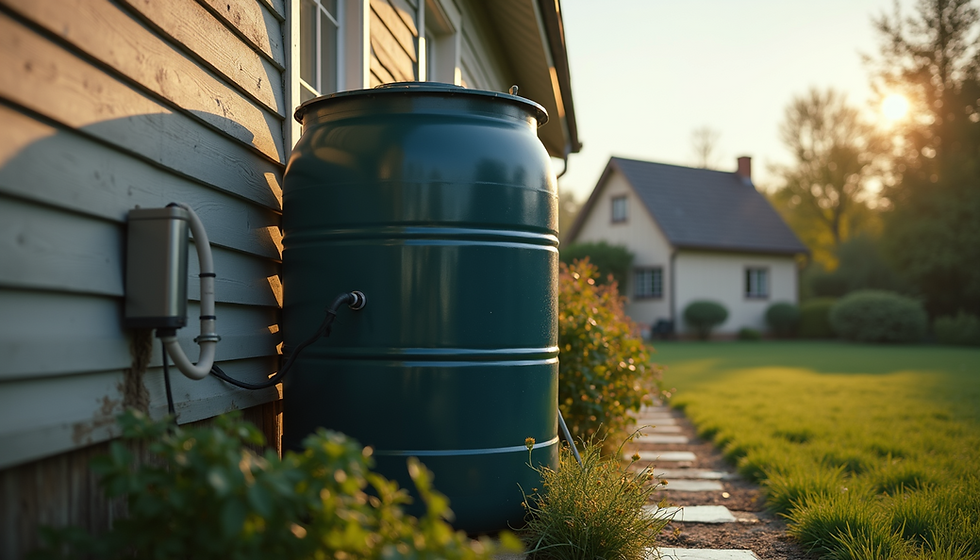Effective Strategies to Safeguard Your Flower Bed During Florida's Rain Storms
- AF Aluminum

- Aug 11, 2025
- 4 min read
Florida boasts beautiful landscapes and vibrant flower beds, but the state's rain storms can be a significant challenge for gardeners. With heavy downpours and strong winds, it is essential to take proactive steps to protect your flowers. This blog post will discuss effective strategies to keep your flower bed safe and thriving during Florida's stormy weather.
Understanding Florida's Rain Storms
Florida's rain storms can strike unexpectedly, often with little warning. These weather events can bring torrential rains, winds reaching 60 mph, and even hail, all capable of damaging your flower beds. For instance, a heavy rainstorm can drop up to 2 to 4 inches of rain in just one hour, leading to soil erosion and standing water.
Understanding the nature of these storms helps you prepare your garden for their impact. By anticipating possible threats and taking necessary precautions beforehand, you can protect your flowers and ensure their continued growth.
Choose the Right Location for Your Flower Bed
Proper placement of your flower bed can serve as a crucial protective measure. When selecting a location, avoid low-lying areas where water tends to accumulate. Instead, opt for elevated spots that facilitate better drainage, reducing the risk of waterlogging that can lead to root rot. For example, even a few inches of elevation can be the difference between a healthy flower bed and a waterlogged disaster.
Additionally, consider the direction of prevailing winds. Position your flower bed in a manner that minimizes exposure to strong gusts, which can uproot plants and cause significant damage.
Use Mulch to Protect Your Flowers
Adding mulch around your flower bed offers multiple benefits, especially during rainstorms. Mulch helps retain moisture in the soil, cutting down the risk of erosion from heavy rains. It acts as a barrier, preventing soil from washing away and safeguarding the roots of your plants.
Choose organic mulch options like wood chips or straw, as they break down over time and enrich the soil. Aim for a thickness of 2-3 inches. Studies show that properly mulched flower beds can retain moisture up to 25% better than bare soil.

Install Proper Drainage Systems
Effective drainage is essential to keep your flower bed safe from excessive rain. If your garden collects water frequently, consider installing a drainage system to reroute excess water away from your plants. A simple trench or the use of perforated pipes can effectively channel water away.
Furthermore, ensure that your flower bed has well-aerated soil. Research indicates that well-aerated soil drains 60% faster than compacted soil, reducing the risk of waterlogging and its detrimental effects on plant health.
Use Plant Supports
Heavy rainstorms bring strong winds that can bend or break plants. To prevent this, consider using plant supports such as stakes, cages, or trellises. These supports will help keep your flowers upright and stable, greatly reducing the risk of damage.
Install supports before storms hit to give your plants the best chance of withstanding severe weather. For instance, securing tall flowers or fragile varieties, like sunflowers or peonies, can drastically improve their resilience during storms.
Select Resilient Plant Varieties
The choice of plants plays a significant role in their ability to endure Florida's rainstorms. Opt for resilient varieties recognized for their strength and resistance to wind and water damage.
Native plants, such as the Florida native Blanket Flower or Coral Bean, often adapt well to local climates and conditions. Research indicates that native species are 30-50% more likely to thrive in native soil conditions than non-native plants, making them a smart choice.
Create Windbreaks
Installing windbreaks can effectively shield your flower bed from strong winds during storms. Shrubs or well-placed fences can reduce wind speed, offering protection to your flowers.
When planning a windbreak, consider both the height and density of plants or structures. A properly situated windbreak can cut wind speed by up to 50%, offering your garden a crucial layer of defense.
Monitor Weather Conditions
Staying updated on weather conditions is vital for protecting your flower bed. Regularly check local forecasts and be ready to act when storms are predicted.
If severe weather is approaching, consider taking additional precautions, such as covering sensitive plants with tarps or moving potted flowers to sheltered areas. Being proactive can significantly enhance your garden's health and longevity.
Regular Maintenance
Ongoing maintenance is essential for keeping your flower bed healthy and resilient. Regular tasks like pruning, deadheading, and managing debris can help your flowers withstand storm stress better.
Also, check for signs of disease or pest infestations, as these can weaken plants and make them more susceptible to damage. For instance, flowers with even moderate aphid infestations can suffer significantly during storms, compromising their overall health.
Final Thoughts
Protecting your flower bed during Florida's rainstorms requires a mix of preparation, strategic planning, and ongoing maintenance. By selecting the right location, using mulch effectively, installing drainage systems, and choosing resilient plant varieties, you can create a flourishing garden that stands strong against the elements.
Stay informed about weather conditions and take proactive measures as storms approach. With these effective strategies, your flower bed can remain a beautiful and vibrant part of your landscape, even amidst Florida's unpredictable weather.




Comments